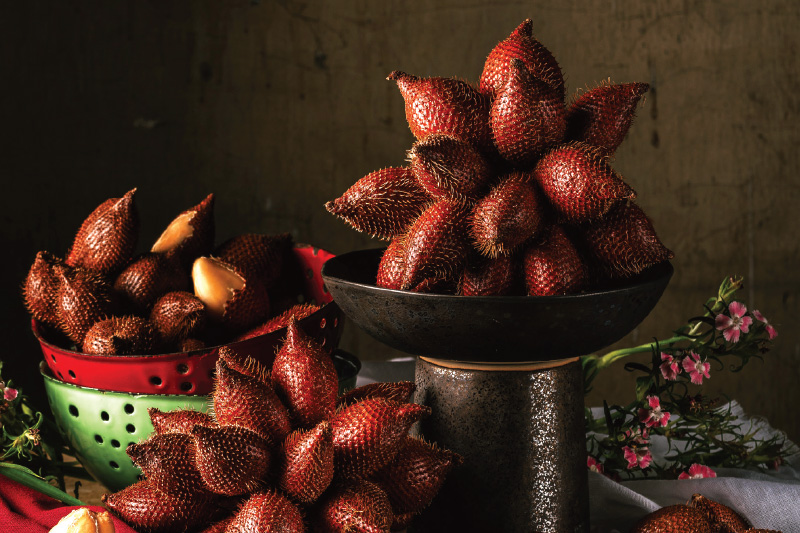
Delicate Flavours Under a Scaly Skin
Don’t judge a fruit by its cover – or you might miss out on a delicious new taste sensation.
Words: Jan Thammapakkul
Photos & Style: Samatchaapaisuwan
Don’t be fooled by the unappetizing reddish-brown scaly skin: the flesh of the snake fruit packs a unique sweet and tangy punch.
Originally native to Java and Sumatra in Indonesia, the snake fruit or “sala” as it is known in Thai can now be found all over the South of Thailand and in most Southeast Asian countries.
This unlikely fruit, which bursts forth from the salak palm tree in little bunches, is not much bigger than a fig and looks like a large clove of garlic when peeled. However, when you bite into the juicy flesh, prepare to be surprised by a complex honey-like sweetness reminiscent of apples, bananas and pineapples – with a hint of apple cider. The flesh surrounds an inedible seed, which can be grown as an attractive houseplant.
You can eat the fruit on its own or dipped in the chilli, salt and sugar mix that is often served with cut fruit in Thailand. The fruit also pops up on Thai restaurants’ hot-season dessert menus as “loi kaew” or “fruit in syrup”. Chilled in a light syrup and served over crushed ice, loi kaew is the perfect antidote for the tropical heat.
Apart from being enjoyed fresh, the snake fruit is also used to make candy, juice, wine and even as an ingredient in savoury dishes like red curry or tom yum.
Snake fruit has also gained a reputation as a superfood that comes brimming with nutrients beneficial to health. Packed with antioxidants, its succulent flesh is thought to help slow down the ageing process if consumed regularly. Some believe it can even help prevent conditions that lead to a variety of different diseases.
